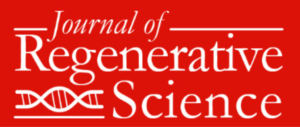Autologous versus Non-autologous Exosomes: Immunological, Safety, and Regulatory Considerations in Regenerative Medicine
Original Article | Vol 5 | Issue 1 | January-June 2025 | page: 31-33 | Ivanny Marchant, Belén Rodríguez, Valentina Pozo, Leopoldo Parada, Carla Salvo, Pablo Olivero
DOI: https://doi.org/10.13107/jrs.2025.v05.i01.167
Open Access License: CC BY-NC 4.0
Copyright Statement: Copyright © 2025; The Author(s).
Submitted Date: 16 Mar 2025, Review Date: 20 May 2025, Accepted Date: May 2025 & Published: 30 Jun 2025
Author: Ivanny Marchant [1], Belén Rodríguez [1], Valentina Pozo [1], Leopoldo Parada [2], Carla Salvo [3], Pablo Olivero [1]
[1] Unidad de Estudios Clínicos, Escuela de Medicina, Universidad de Valparaíso, Chile,
[2] Centro de Medicina Regenerativa CITOMED, Viña del Mar, Chile,
[3] Centro de Sangre y Tejidos de Valparaíso, Chile.
Address of Correspondence
Dr. Pablo Olivero,
Unidad de Estudios Clínicos, Escuela de Medicina, Universidad de Valparaíso, Chile.
E-mail: pablo.olivero@uv.cl
Abstract
Small extracellular vesicles (sEVs), commonly referred to as exosomes, have emerged as novel therapeutic tools in regenerative and esthetic medicine. A critical decision in their clinical application is the choice between autologous and non-autologous products, as this distinction directly impacts safety, immunocompatibility, efficacy, and regulatory compliance. This review analyzes the immunological profile and biological risks associated with exosomes’ clinical use according to their cellular origin, addressing persistence, pathogen transmission, delivery routes, and regulatory classification. Furthermore, we highlight the strategic role of blood centers and biobanks in producing high-safety allogeneic sEVs, especially those derived from human platelets and mesenchymal stromal cells expanded in xenofree conditions. While autologous exosomes offer maximal immunological safety, standardized allogeneic strategies free from animal-derived components represent a scalable and regulatory-compatible alternative for modern regenerative therapies.
Keywords: Exosomes, Regenerative Medicine, Autologous Exosomes, Non-autologous Exosomes
References:
1. Antimisiaris SG, Mourtas S, Marazioti A. Exosomes and exosome-inspired vesicles for targeted drug delivery. Pharmaceutics 2018;10:218.
2. Herrmann IK, Wood MJ, Fuhrmann G. Extracellular vesicles as a next-generation drug delivery platform. Nat Nanotechnol 2021;16:748-59.
3. Adelipour M, Lubman DM, Kim J. Potential applications of mesenchymal stem cells and their derived exosomes in regenerative medicine. Expert Opin Biol Ther 2023;23:491-507.
4. Ma Z, Yang J, Lu Y, Liu Z, Wang X. Mesenchymal stem cell-derived exosomes: Toward cell-free therapeutic strategies in regenerative medicine. World J Stem Cells 2020;12:814-40.
5. Rezabakhsh A, Sokullu E, Rahbarghazi R. Applications, challenges and prospects of mesenchymal stem cell exosomes in regenerative medicine. Stem Cell Res Ther 2021;12:521.
6. Mendt M, Rezvani K, Shpall E. Mesenchymal stem cell-derived exosomes for clinical use. Bone Marrow Transplant 2019;54:789-92.
7. Beetler DJ, Di Florio DN, Law EW, Groen CM, Windebank AJ, Peterson QP, et al. The evolving regulatory landscape in regenerative medicine. Mol Aspects Med 2023;91:101138.
8. Andriolo G, Provasi E, Cicero VL, Brambilla A, Soncin S, Torre T, et al. Exosomes from human cardiac progenitor cells for therapeutic applications: Development of a GMP-grade manufacturing method. Front Physiol 2018;9:1169.
9. Codispoti B, Marrelli M, Paduano F, Tatullo M. NANOmetric Bio-banked MSC-derived exosome (NANOBIOME) as a novel approach to regenerative medicine. J Clin Med 2018;7:357.
10. Muthu S, Bapat A, Jain R, Jeyaraman N, Jeyaraman M. Exosomal therapy-a new frontier in regenerative medicine. Stem Cell Investig 2021;8:7.
11. Foo JB, Looi QH, Chong PP, Hassan NH, Yeo GE, Ng CY, et al. Comparing the therapeutic potential of stem cells and their secretory products in regenerative medicine. Stem Cells Int 2021;2021:2616807.
12. D’Souza R, Her Y, Hussain N, Karri J, Schatman ME, Calodney AK, et al. Evidence-based clinical practice guidelines on regenerative medicine treatment for chronic pain: A consensus report from a multispecialty working group. J Pain Res 2024;17:2951-3001.
13. Everts PA, Podesta L, Lana JF, Shapiro G, Domingues RB, Van Zundert A, et al. The regenerative marriage between high-density platelet-rich plasma and adipose tissue. Int J Mol Sci 2025;26:2154.
14. Giebel B. A milestone for the therapeutic EV field: FDA approves Ryoncil, an allogeneic bone marrow-derived mesenchymal stromal cell therapy. Extracell Vesicles Circ Nucl Acids 2025;6:183-90.
15. Basyoni AE, Atta A, Salem MM, Mohamed TM. Harnessing exosomes for targeted drug delivery systems to combat brain cancer. Cancer Cell Int 2025;25:150.
16. Cavallo C, Merli G, Zini N, D’Adamo S, Cattini L, Guescini M, et al. Small extracellular vesicles from inflamed adipose derived stromal cells enhance the NF-κB-dependent inflammatory/catabolic environment of osteoarthritis. Stem Cells Int 2022;2022:9376338.

| How to Cite this article: Marchant I, Rodríguez B, Pozo V, Parada L, Salvo C, Olivero P | Autologous versus Non-autologous Exosomes: Immunological, Safety, and Regulatory Considerations in Regenerative Medicine | Journal of Regenerative Science | Jan-Jun 2025; 5(1): 31-33.
|

